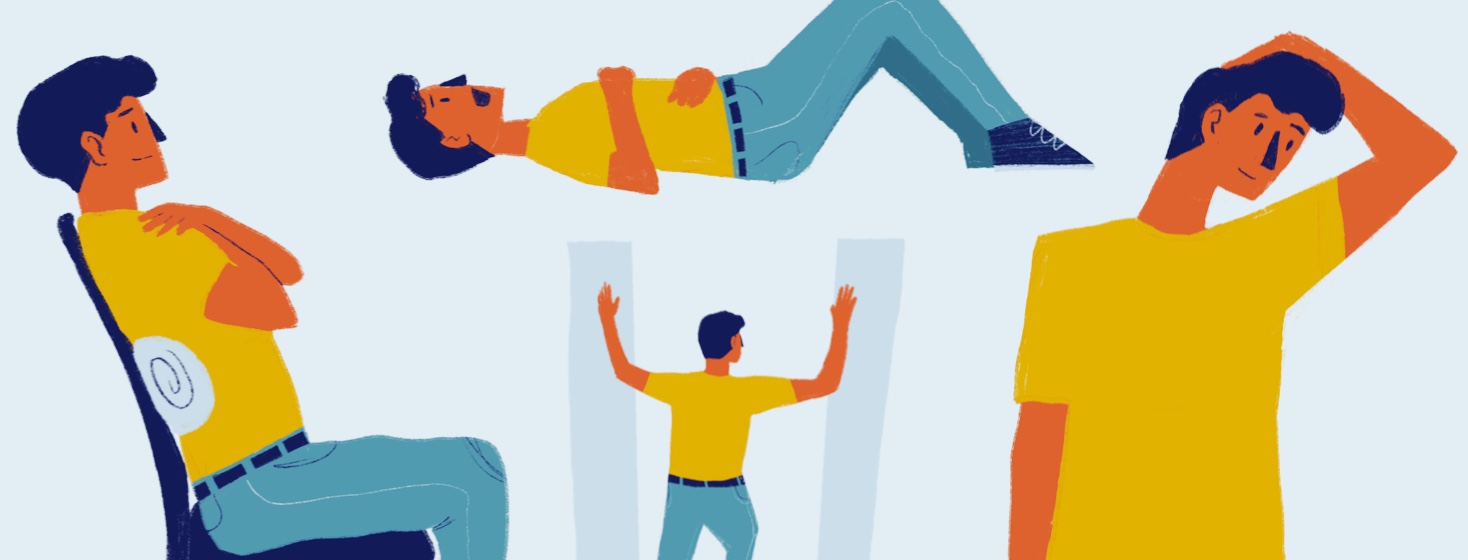This post is for anyone who knows someone struggling with the excruciating pain of costochondritis stretches. Luckily, stretching is one of the easiest and most effective forms of treatment. They can be performed in two minutes or less but quickly pack a ton of power to alleviate the most unbearable symptoms.
Costochondritis is one of the easiest and most effective forms of treatment. Stretches can be performed in two minutes or less, but pack a ton of power to alleviate the most unbearable symptoms quickly. They can be done in less than two minutes and are the most effective.
Costochondritis stretches are a great way to help loosen and stretch out the muscles and cartilage surrounding the ribs and sternum.

This helps alleviate the pressure and pain on your chest and lungs that comes with having costochondritis.
Costochondritis stretches are a great way to help loosen and stretch out the muscles and cartilage surrounding the ribs and sternum. This helps alleviate the pressure and pain on your chest and lungs that comes with having costochondritis.
A condition called costochondritis can cause pain, usually in the chest. Some stretches can alleviate symptoms.
What is Costochondritis?
Costochondritis is a condition affecting the muscles and joints used to hold your ribs together. However, these muscles can get strained or injured for various reasons. To find out about 10 Quickest and Most Effective Costochondritis Stretches, check out this article at Home Business Coaching dot com.
The thing you should keep on your Mind
- What is costochondritis?
- What are the benefits of costochondritis stretches?
- How can I stretch my chest muscles?
- How often should I do these stretches?
- What other things can I do to help?
- Can anything else cause chest pain or discomfort?
- What if I have a fever?
Costochondritis is when the cartilage connecting the ribs to the breastbone becomes inflamed. This results in chest pain that is sometimes accompanied by a fever. Costochondritis is when the cartilage connecting the ribs to the breastbone becomes inflamed.
Symptoms of Costochondritis
Costochondritis is an inflammation of the cartilage that connects the ribs to the breastbone. The condition may be acute or chronic. It usually causes no symptoms and can go away without treatment.
Symptoms
Pain in the center of the chest (left side under the breastbone). There may also be tenderness on deep breathing, pressure over the sternum, and pain when pushing forward with the fingers on either side of the breastbone. The pain may last for a few hours and then subside.
According to a study, costochondritis stretches are commonly used to relieve the pain that the condition can cause. These stretches can help restore some of the range of motion in a painful joint, which will ease the discomfort. To do a costochondritis stretch, a person should lie on their back and hug their knees to their chest. They should then rotate one knee outwards and pull it away from the other knee. The person should hold the stretch for about 30 seconds, then reverse and repeat on the other side. They should also perform this exercise regularly to help ease the pain caused by costochondritis.
This is a valuable exercise for those who experience ongoing chest pain due to costochondritis, as it helps strengthen their chest muscles and improve flexibility in their chest region.
Risk Factors for Costochondritis
Costochondritis results from inflammation of the cartilage that connects the ribs to the breastbone (sternum). The cartilage that connects the ribs to the breastbone is the cartilage that causes cartilage inflammation. The pain associated with costochondritis is typically a sharp, aching pain around the cartilage, near the breastbone.
Costochondritis is the cartilage inflammation that connects the ribs to the breastbone. The condition causes chest pain, tenderness in the front rib area, and increased breathing difficulty. There are different ways to stretch your chest to reduce costochondritis symptoms. You can either tilt your torso forward at a 30-degree angle or hold your arm up in the air to open the chest cavity.
Who is at Risk for Costochondritis?
In traditional medicine, costochondritis is seen as a single-symptom disease. It is, however, more than just pain in the chest wall. Whether or not someone has acute, recurrent attacks, chronic chest pains, and bibasilar crepitus (a sensation of crackling or popping from within the chest cavity), whether or not the attacks are disabling and interfering with daily activities this all varies from person to person and case to case.
Costochondritis is a disorder that affects the cartilage and ribs, but it can happen to anyone. The condition can affect anyone.
The costochondritis stretches are designed to decrease the level of stiffness in the chest. This is done by creating deep breaths that will gradually open up the trunk, thus creating space for the rib cage. Significantly decreasing the stiffness, it will allow the muscles to relax and help in reducing the pain of the condition. This is one of the significant areas that we have to work on when dealing with patients suffering from costochondritis.
Conclusion
Costochondritis is an inflammation of the cartilage (known as costal cartilage) that runs along the chest wall. This inflammation often occurs due to an injury or direct trauma to the chest, or it can be caused by a condition such as rheumatoid arthritis. It causes pain and stiffness in the chest area, making it difficult to do any physical activity.












